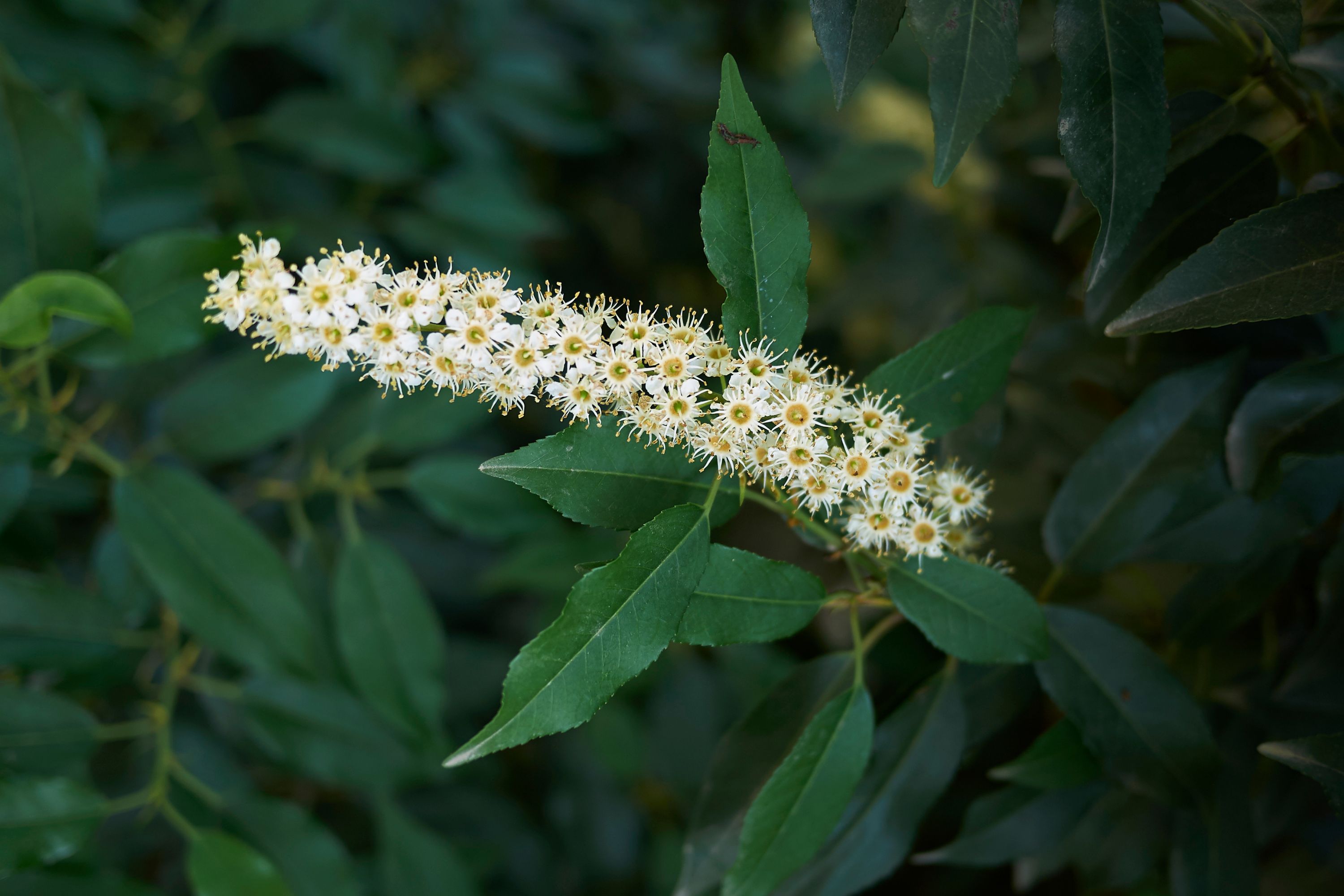Portuguese laurel
(Prunus lusitanica)

Description
Prunus lusitanica is a flowering plant species commonly known as Portugal laurel or Portuguese cherry. It belongs to the family Rosaceae and is native to the western Mediterranean region, including Portugal, Spain, and Morocco. It is a small tree or large shrub, highly valued for its ornamental qualities, medicinal properties, and as a hedging plant. In this article, we will explore the botany, ecology, cultivation, and uses of Prunus lusitanica in detail. Botanical Description Prunus lusitanica is a slow-growing evergreen tree or shrub that can grow up to 15 meters tall in its natural habitat. However, in cultivation, it is usually maintained at a height of 2-4 meters. The leaves are glossy, dark green, and oval-shaped, with a pointed tip, and can grow up to 15 cm long and 7 cm wide. The leaves emit a strong, sweet fragrance when crushed. The flowers are small, white, and clustered in upright racemes, measuring about 15 cm in length. The flowers appear in early summer and are followed by small, dark red, cherry-like fruits that are edible but not commonly consumed due to their bitter taste. The bark of Prunus lusitanica is smooth and grayish-brown, while the twigs are reddish-brown and hairy. Ecology and Distribution Prunus lusitanica is a Mediterranean plant that is adapted to hot, dry summers and mild, wet winters. It is found in a range of habitats, including forests, scrublands, and rocky hillsides, and can tolerate a wide range of soils, including well-drained sandy loam, clay, and limestone soils. Prunus lusitanica is native to Portugal, Spain, and Morocco but has been introduced to other parts of the world, including the United States, the United Kingdom, and Australia, where it is cultivated as an ornamental plant. Cultivation and Propagation Prunus lusitanica is a popular ornamental plant in gardens and parks due to its attractive glossy leaves, fragrant flowers, and tolerance to clipping, making it an ideal hedging plant. It can be grown as a single specimen or in groups to form a hedge. It is best planted in a sunny or partially shaded position, protected from strong winds. Prunus lusitanica is relatively easy to propagate from seeds, cuttings, or layering. Seeds should be sown in late winter or early spring, while cuttings should be taken in early summer. Layering involves burying a low-hanging branch in the ground to root and produce a new plant. Prunus lusitanica is relatively low maintenance and requires little pruning, although regular clipping is necessary to maintain a compact hedge. It is relatively drought-tolerant but benefits from regular watering during prolonged dry periods. Uses Prunus lusitanica has a wide range of uses, including ornamental, medicinal, and culinary. Ornamental Uses Prunus lusitanica is commonly used as an ornamental plant in gardens and parks, both as a single specimen and in groups to form a hedge. Its glossy leaves and fragrant flowers make it an attractive addition to any garden, and it is particularly useful as a hedging plant due to its tolerance to clipping. Medicinal Uses Prunus lusitanica has been used for medicinal purposes for centuries, particularly in traditional medicine. The leaves and bark of the plant contain a range of bioactive compounds, including cyanogenic glycosides, flavonoids, and tannins, which are believed to have a range of therapeutic effects. Here are some of the medicinal uses of Prunus lusitanica: Digestive Health: The leaves and bark of Prunus lusitanica contain tannins, which are astringent compounds that can help reduce inflammation and irritation in the digestive tract. The plant has been used to treat diarrhea, dysentery, and other digestive problems. Respiratory Health: The leaves and bark of Prunus lusitanica have expectorant properties, which means they can help loosen and expel mucus from the lungs. The plant has been used to treat respiratory infections, such as bronchitis and asthma. Pain Relief: The leaves and bark of Prunus lusitanica contain salicylates, which are compounds that have pain-relieving and anti-inflammatory properties. The plant has been used to treat headaches, fever, and other types of pain. Skin Health: The leaves and bark of Prunus lusitanica contain antimicrobial and anti-inflammatory compounds that can help soothe and heal skin conditions, such as acne, eczema, and psoriasis. Heart Health: The leaves and bark of Prunus lusitanica contain flavonoids, which are antioxidants that can help reduce the risk of heart disease by protecting the blood vessels from damage. It is important to note that while Prunus lusitanica has been traditionally used for medicinal purposes, more research is needed to fully understand its potential health benefits and side effects. It is always recommended to consult with a healthcare professional before using any herbal remedies.
Taxonomic tree:







